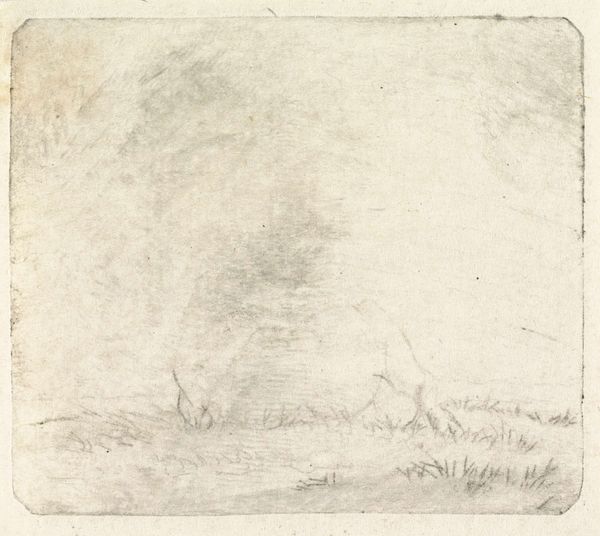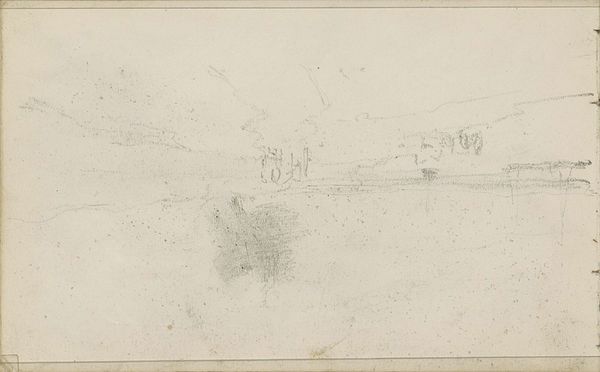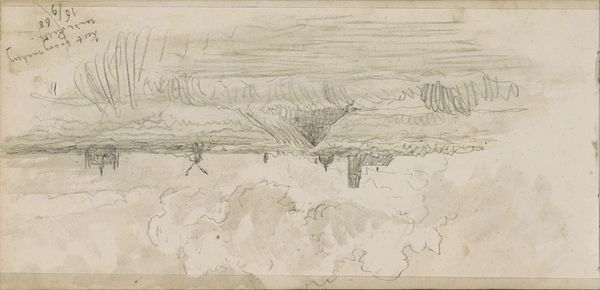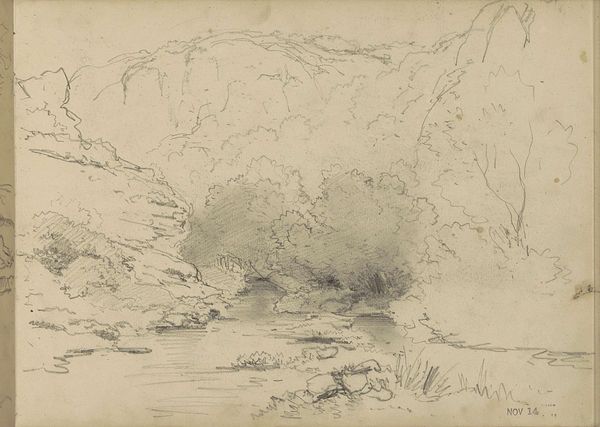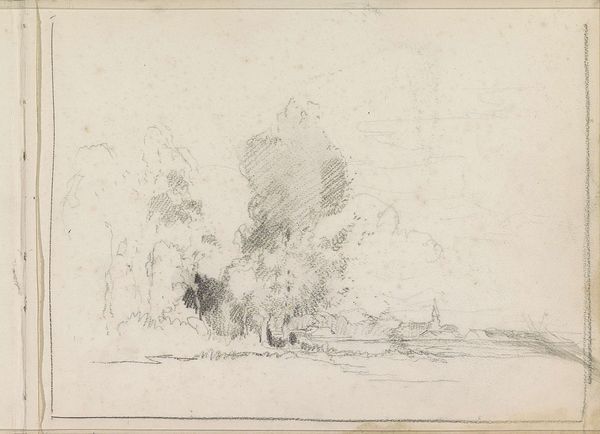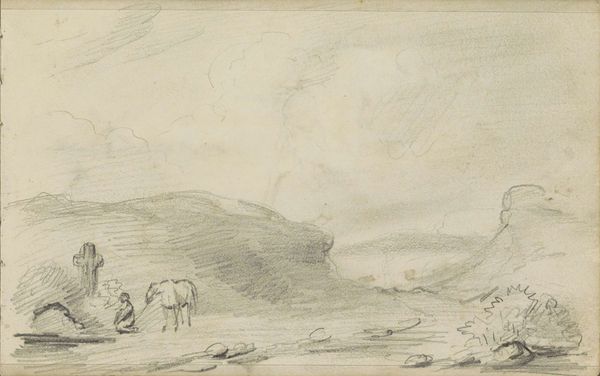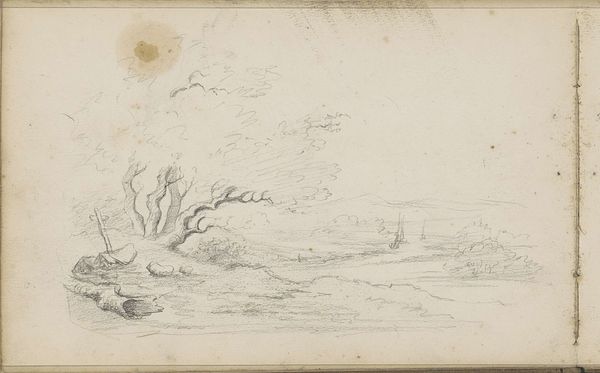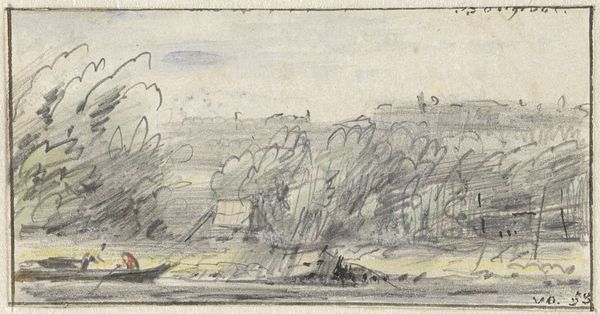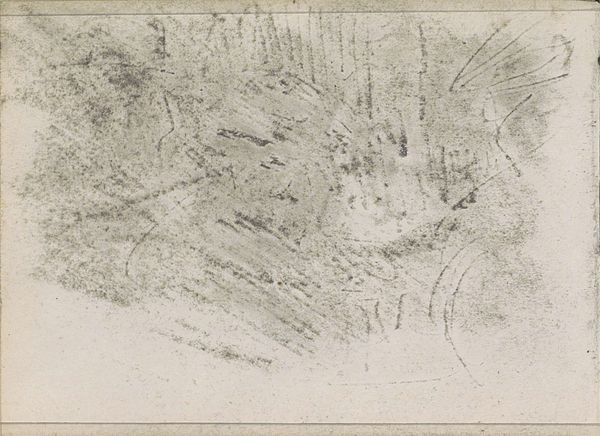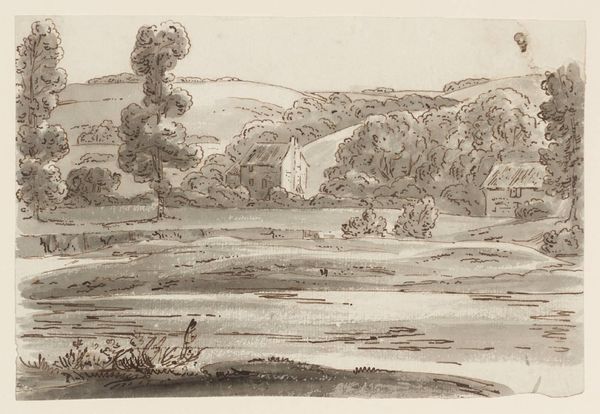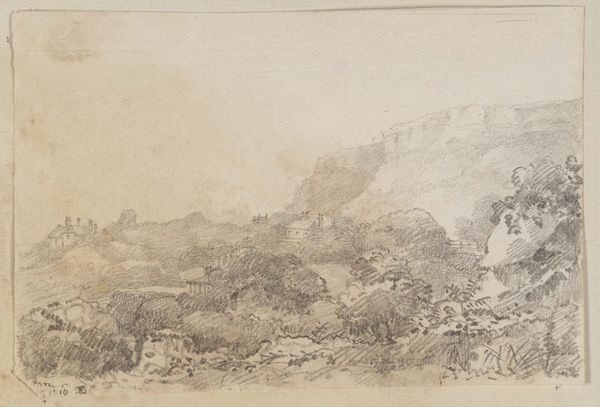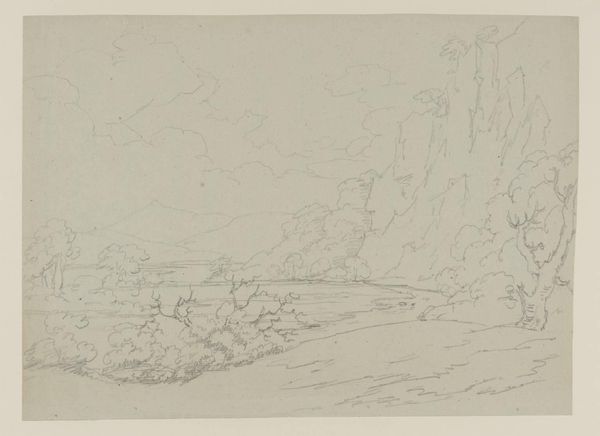
drawing, pencil
#
pencil drawn
#
drawing
#
landscape
#
pencil
#
realism
Dimensions: height 41 mm, width 67 mm
Copyright: Rijks Museum: Open Domain
Curator: This is "Landscape with Bridge" by Maxime Lalanne, dating from 1837 to 1886 and currently residing here at the Rijksmuseum. Editor: Immediately, it's striking how understated this is. The pencil work creates a kind of dreamy haziness over the entire scene. The bridge looks almost sketched in as an afterthought. Curator: I agree, it’s not meant to be a dramatic statement. Lalanne was, after all, operating within a specific historical context of the 19th century where landscape art served multiple purposes – documentation, romantic escapism, and reflections of national identity. These types of landscape works helped viewers conceptualize their relationship to both their environment and nationhood. Editor: That's a crucial point. For me, though, I look at that bridge itself, those rough pencil strokes suggesting beams and maybe even stonework. We have to consider the labor involved in the creation of those objects depicted. Where did those materials come from? How did people build such things? Curator: And even more fundamentally, where did the materials come from to produce a pencil like this, during a period of resource extraction, of increasingly complex supply chains and consumerism? Editor: Precisely! Lalanne’s choice of the pencil – such a seemingly simple, easily distributed technology – also implies accessibility. How does art production serve or reflect larger modes of production and labor relations within a community or society? Curator: Interesting. What about the almost photographic way in which the work mimics light and depth. Think about how photography was beginning to change how artists thought about capturing the world. Did this artist embrace that new objectivity, or subtly critique it? Editor: Maybe both. Perhaps it served as a way to contemplate the transformation of perception in an increasingly industrialized society, reflecting a nostalgia for nature while being created from and with its own instruments and tools. Curator: Thinking of it in those terms opens up exciting questions. It moves it beyond a simple representation to being a powerful social artifact of a shifting era. Editor: Exactly! Now, looking back at that hazy composition, I can see the means of production are inseparable from the scene being depicted. It gives me a whole new view.
Comments
No comments
Be the first to comment and join the conversation on the ultimate creative platform.

